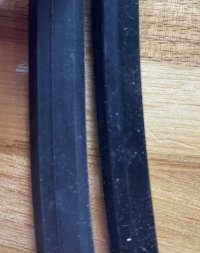Jesse Runowski
Well-Known Member
Since you have a 2" valve after the site glass, I would dump yeast with the site glass attached. As long as you are pushing CO2 through the top gas manifold you should have positive pressure reducing/eliminating O2 intake. If you take the site glass off you'll want to make sure to purge it thoroughly with Co2 before opening the value between it and your tank bottom. If you don't, all of the O2 will go straight into your brew.- sanitize, reattach, open site glass valve. After some time, will I have to dump another site glass full of yeast?
I had to get leg extensions to make enough room for the site glass, value and connector that is hooked to 3" tubing to dump yeast / hops. Still a super tight fit.

























































![Craft A Brew - Safale BE-256 Yeast - Fermentis - Belgian Ale Dry Yeast - For Belgian & Strong Ales - Ingredients for Home Brewing - Beer Making Supplies - [3 Pack]](https://m.media-amazon.com/images/I/51bcKEwQmWL._SL500_.jpg)
